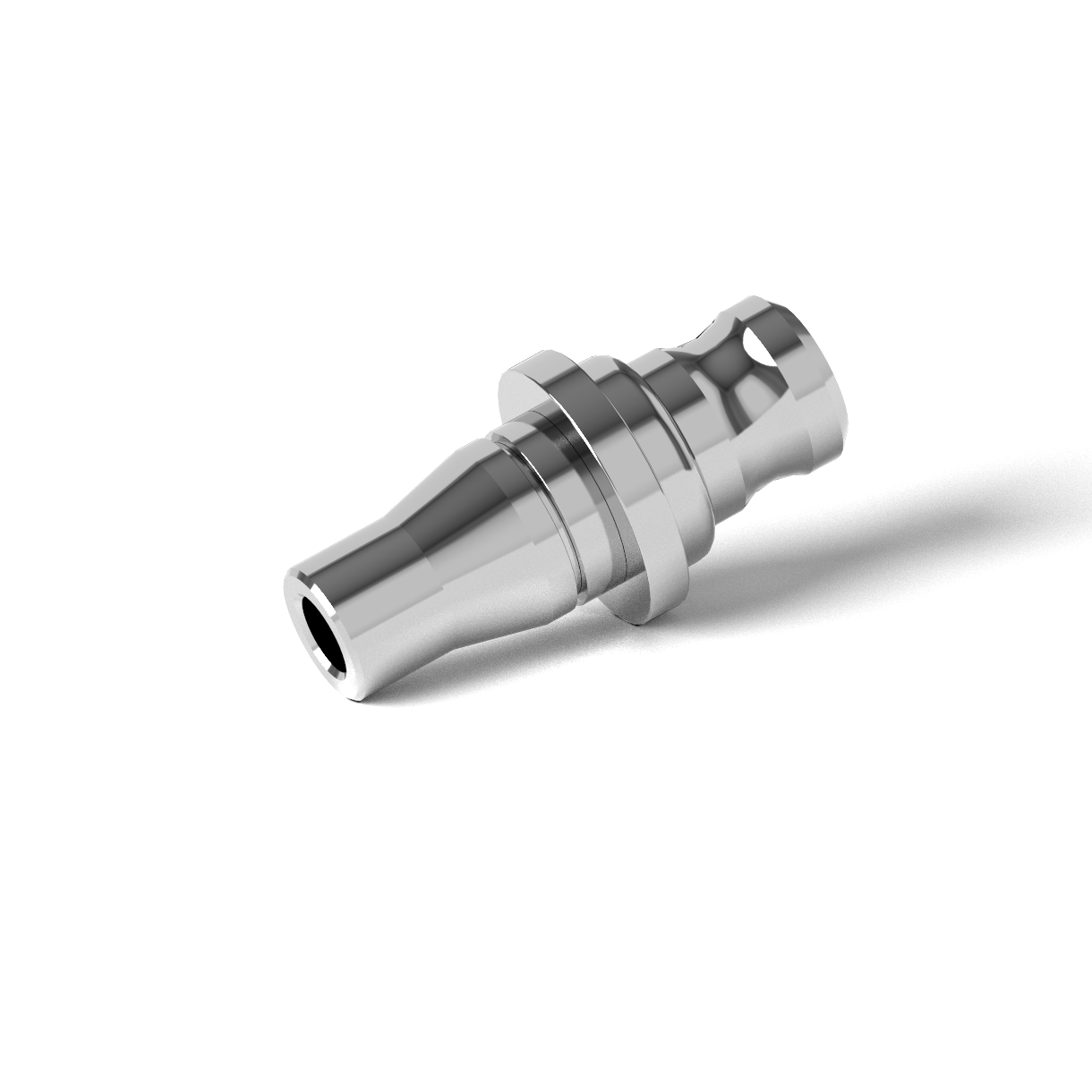Stainless steel turning milling
Stainless steel is high-alloy steel with a chromium content of more than 10.5%, giving it very good corrosion resistance and good mechanical properties. Stainless steel is used for turning and milling parts for a wide range of industries, from medical technology to the chemical and pharmaceutical industries to mechanical and plant engineering.

Our stainless steel alloys
We offer you a choice of various stainless steel alloys that differ significantly in terms of their mechanical properties and machinability. Our overview will help you to select the ideal material for your turning parts and milling parts.
| Alloy | Material costs | Manufacturing costs | Tensile strength N/mm² | Hardness HB | Description |
|---|---|---|---|---|---|
|
1.4021 |
€€€ |
€€€ |
700 – 850 |
225 |
Hardenable, martensitic steel characterized by its high polishability and good mechanical properties. It is often used as a knife steel and impresses with its weldability, magnetizability, polishability and hardenability. |
|
1.4057 |
€€€€€ |
€€€€ |
800 – 950 |
310 |
Hardenable, martensitic steel with high strength and good corrosion resistance. It is well suited for welding, can be magnetized and hardened, which is why it is often used for heavily stressed machine parts. |
|
1.4104 |
€€ |
€€ |
650 – 850 |
220 |
Martensitic chromium steel with excellent machinability and good mechanical properties, which can be further improved by tempering. The stainless material can be magnetized and hardened. |
|
1.4112 |
€€€€€ |
€€€€€ |
925 |
265 (27 HRC) |
Corrosion-resistant, martensitic chromium steel that achieves exceptionally high hardness and wear resistance through heat treatment. It is also characterized by its excellent polishability, magnetizability and hardenability. |
|
1.4301 |
€€ |
€€€ |
500 – 700 |
215 |
This is the stainless steel most frequently used for turning and milling work and impresses with a balanced ratio of all relevant material properties. It is non-magnetic, very good for welding, acid-resistant and resistant to low temperatures down to 0 °C. |
|
1.4305 |
€€€ |
€€ |
500 – 700 |
230 |
Thanks to its special composition, it is particularly well-suited for machining and is frequently used. However, compared to 1.4301, it has lower corrosion resistance and is not weldable. The material is non-magnetic and stands out for its excellent machinability. |
|
1.4404 |
€€€€ |
€€€€ |
500 – 700 |
215 |
Characterized by exceptionally high corrosion resistance to acids and chloride-containing media. The non-magnetic material is highly weldable and is frequently used in the chemical industry. |
|
1.4542 |
€€€ |
€€€€ |
930 |
300 (32 HRC) |
Stainless, precipitation-hardenable chromium-nickel steel stabilized by niobium. This highly alloyed material combines high corrosion resistance with exceptional strength and ductility, making it particularly suitable for high-performance applications. It is highly weldable and hardenable. |
|
1.4571 |
€€€€€ |
€€€€ |
500 – 700 |
215 |
Offers similar corrosion resistance and mechanical properties to 1.4404, but is characterized by better high-temperature strength. Machinability is somewhat more difficult, but the material is easy to weld, non-magnetic and acid-resistant. |
|
1.4841 |
€€€€€ |
€€€€€ |
500 – 700 |
220 |
This silicon-alloyed, austenitic stainless steel is particularly suitable for use in high-temperature applications. It has good strength properties at temperatures up to 1150 °C and excellent corrosion resistance up to 650 °C. The material is easy to weld, non-magnetic and heat-resistant. |
Note: The provided results are reference values and may vary depending on the machining process and parts. These values cannot be directly transferred to finished parts. The suitability of the materials for a specific part must be verified by the user.
Stainless steel turning milling
At Spanflug, you can procure your turning and milling parts made from stainless steel quickly and easily with an instant quote. For larger projects, you can send your detailed project RFQs directly by e-mail.